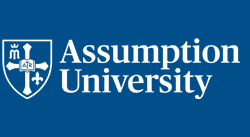Document Type
Article
Publication Date
2006
Published In
Saline Systems
Keywords
Nucleotide Excision Repair, Halophilic Archaea, Dark Repair, Methanosphaera Stadtmanae, Methanothermobacter Thermoautotrophicus
Abstract
Background
Sequenced archaeal genomes contain a variety of bacterial and eukaryotic DNA repair gene homologs, but relatively little is known about how these microorganisms actually perform DNA repair. At least some archaea, including the extreme halophile Halobacterium sp. NRC-1, are able to repair ultraviolet light (UV) induced DNA damage in the absence of light-dependent photoreactivation but this 'dark' repair capacity remains largely uncharacterized. Halobacterium sp. NRC-1 possesses homologs of the bacterial uvrA, uvrB, and uvrC nucleotide excision repair genes as well as several eukaryotic repair genes and it has been thought that multiple DNA repair pathways may account for the high UV resistance and dark repair capacity of this model halophilic archaeon. We have carried out a functional analysis, measuring repair capability in uvrA, uvrB and uvrC deletion mutants.
Results
Deletion mutants lacking functional uvrA, uvrB or uvrC genes, including a uvrA uvrC double mutant, are hypersensitive to UV and are unable to remove cyclobutane pyrimidine dimers or 6–4 photoproducts from their DNA after irradiation with 150 J/m2 of 254 nm UV-C. The UV sensitivity of the uvr mutants is greatly attenuated following incubation under visible light, emphasizing that photoreactivation is highly efficient in this organism. Phylogenetic analysis of the Halobacterium uvr genes indicates a complex ancestry.
Conclusion
Our results demonstrate that homologs of the bacterial nucleotide excision repair genes uvrA, uvrB, and uvrC are required for the removal of UV damage in the absence of photoreactivating light in Halobacterium sp. NRC-1. Deletion of these genes renders cells hypersensitive to UV and abolishes their ability to remove cyclobutane pyrimidine dimers and 6–4 photoproducts in the absence of photoreactivating light. In spite of this inability to repair UV damaged DNA, uvrA, uvrB and uvrC deletion mutants are substantially less UV sensitive than excision repair mutants of E. coli or yeast. This may be due to efficient damage tolerance mechanisms such as recombinational lesion bypass, bypass DNA polymerase(s) and the existence of multiple genomes in Halobacterium. Phylogenetic analysis provides no clear evidence for lateral transfer of these genes from bacteria to archaea.
Grant Information
The work was funded in the UK by BBSRC project grant # P18099 to SM and, in the US, by a MedCen Research and Education Grant from the MedCen Foundation, Macon, Georgia (#23750) and faculty development grants from Mercer University and Assumption College to DJC and undergraduate research grants to MC, ER and LS. BRB and SD were supported by an NSF grant (MCB-0450695).
DOI
10.1186/1746-1448-2-11
Creative Commons License

This work is licensed under a Creative Commons Attribution 4.0 International License.
Rights
© Crowley et al; licensee BioMed Central Ltd.
Recommended Citation
Crowley, D. J.; Boubriak, I.; Berquist, B. R. ; Clark, M.; Richard, E.; Sullivan, L.; DasSarma, S.; and McCready, S. (2006). The uvrA, uvrB and uvrC Genes are Required for Repair of Ultraviolet Light Induced DNA Photoproducts in Halobacterium sp. NRC-1. Saline Systems 2: 11. https://doi.org/10.1186/1746-1448-2-11

